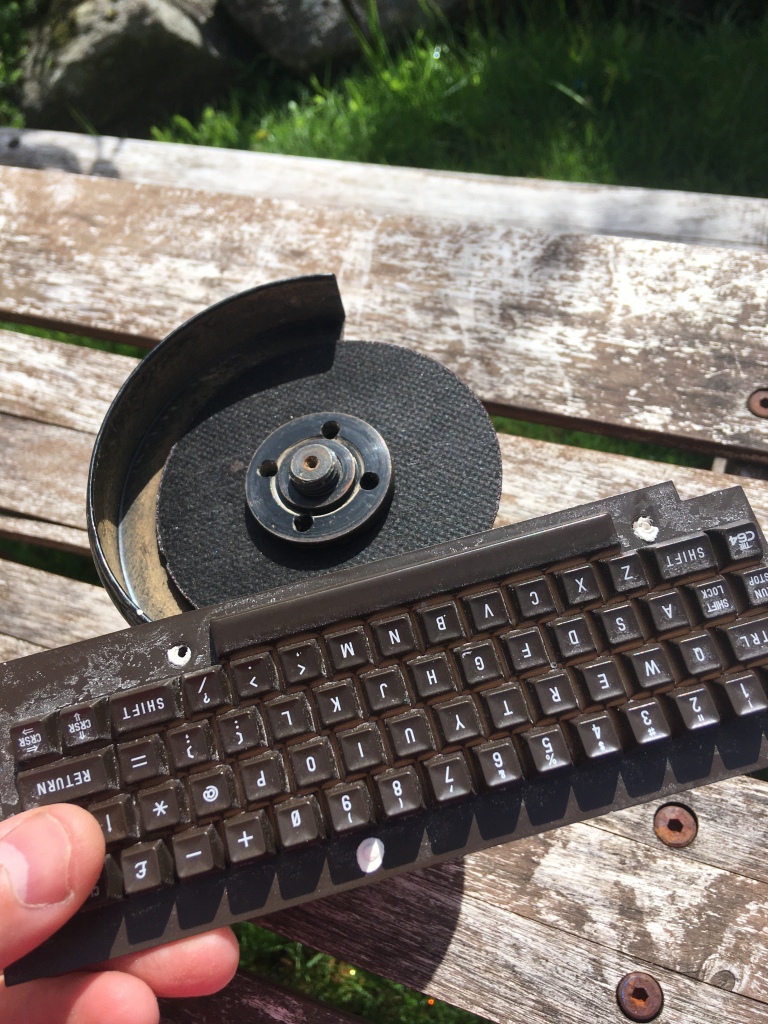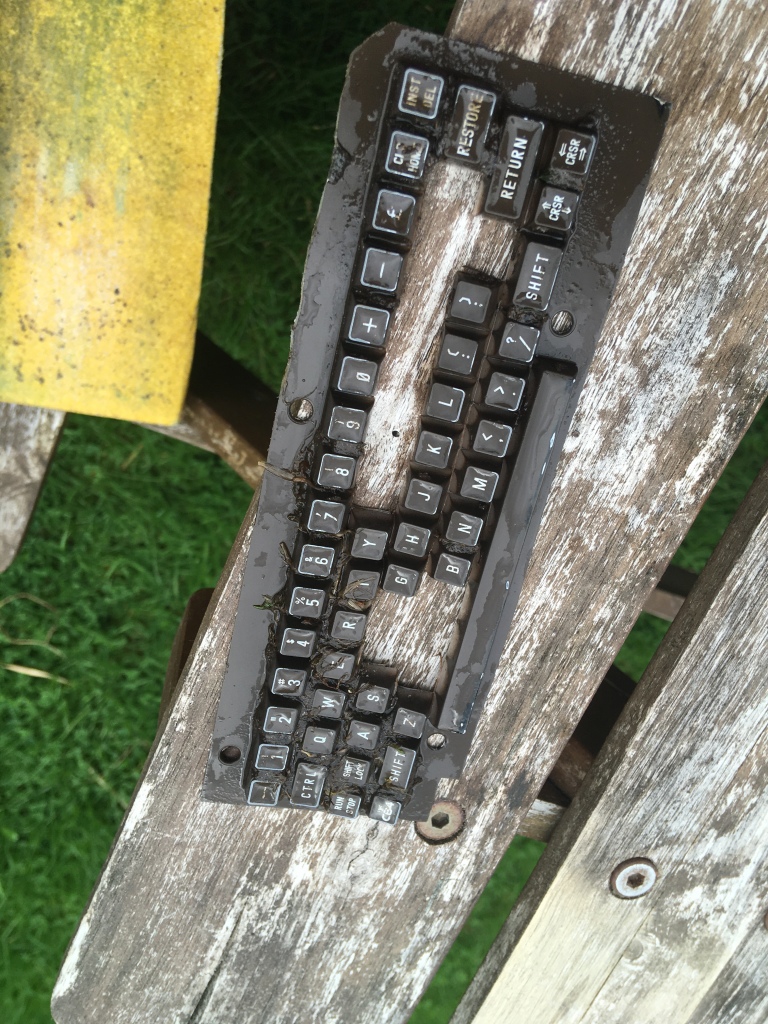
A quick dry overnight and….It’s a success!.
BEFORE this point (or, worst case, at this point) I’d highly recommend you clean the keyboard thoroughly and go, purchase some clearcote / clear lacquer. I haven’t done it yet but will be spraying my next keyboard to get some longevity on the text and paint……...
The mould’s quite bubbly and not really useful for much other than being a support…But, if done with more care – who knows!, Maybe C64Mini Chocolate keyboards?
Next step, Power Tools!
ROUND 1

Still not entirely sure if it’s even possible to quickly and repeatedly butcher the C64Mini’s keyboard reliably with good quality.
For doing your own / one off’s, this step, you can take as long as you want. if you plan on doing a few though, taking a day or two individually dremmeling out the keys isn’t my idea of fun.
I do have a CNC – so, worst case I’ll have to learn how to actually use it, then I’d just need to make a protective jig, sit the keyboard on and just CNC the keys out. I’m not really in the mood to spend a few weekends firing that workflow up yet

The Angle grinder wasn’t really a success…..The blade’s too small and the sanding is going to be too uneven. There’s no way this will work .
Round 2………..


Ok, first thoughts, it seems to work, abeit slowly and with making my hand a bit sore….

At this point, I figured if I use something soft and large, I could hold the keyboard in place and sand it without hurting my hands so much…..
Puzzled over this one for quite a while till I looked down……..

Found an incredibly inefficient lawn cutting method! – Orbital sanding
Seems to have done the trick!…Pressing down into the grass holds the keyboard in place and also helps resist the vibration of the sander, making it sand more efficiently…………Win Win….Also i’ll patent pend using oribital sanders for domestic grass management.
But……

I moved to another bit of the lawn to avoid totally destroying a good bit of the grass…….I found that sanding till you can see the blacks of its eyes…….the lines between the keys seems to work well. At this step, you’ll want to remove as much material as possible to avoid so much processing / sanding later on
Do resist the urge to twist / remove the keys, try to let them come out almost by themselves


oops
At this point I’d realised that an average household lawn is actually quite abrasive..Have a look at the whiteness of the edges of the keys!
Oops! – ah well, this is why i’m experimenting, so you don’t have to. I’m going to run with the theme though -these keys look a bit battle worn now, no going back so i’ll probably add a similar theme to my C64mini case 🙂 will be good to relive the old days of creating scenery and my Warhammer 40,000 airbrushing . never really did play it, just enjoyed hacking up the plastics……..Anyways…
Keep sanding, get as much material off as you can (it will save a LOT of time later)
Once you’ve got them all separated, make sure to lay them all out in order so you can admire all the keyboardy keycappy goodness that’s resulted from the dismemberment of an innocent miniature recreation of an 80’s 8 bit home computer.

Now, go spending several hours in the garden trying to find the most commonly used letter in the English alphabet!
I’d neglected to factor in the ability of these tiny keycaps to fling themselves a considerable distance in various directions whilst being vibrated several hundred times per second.
Suffice to say, if you’re doing the same thing, try to do it in a location where the floors relatively clean and uncluttered
A colourblind person trying to find a brown keycap in a green lawn that’s not too long, but just long enough to expose the also brown ground beneath……..Yeah, not fun.
After an HOUR of searching though………………..Eeeeeeee….A full keyboard

Next step – post processing. Removing supports.
This step i’d say is the most important. Sand down a bit the bottom and curves of each key. Get rid of all the burrs, bits, etc. you won’t get much of a chance to do this once they’re stuck. Spend a lot of time on this, cleaning each key, just getting it ‘right’

Once your keys are all looking great and sanded, smooth – arrange them again into a the keyboard layout. Then, one by one, transfer them into the mould.
you’ll wanna make sure you get this part right 😛
I did them line by line, starting left to right. I also had taken a picture of the keyboard prior to refer to. Check twice, place once……………
Now i’ve realised that I haven’t actually considered how to stick these things in! – i’ll need to go research glue, D’oh! gotta pause this for another week of research and buying bits




































































